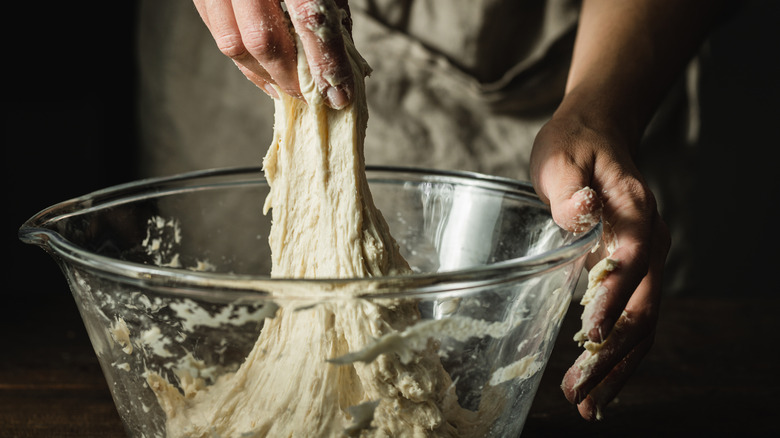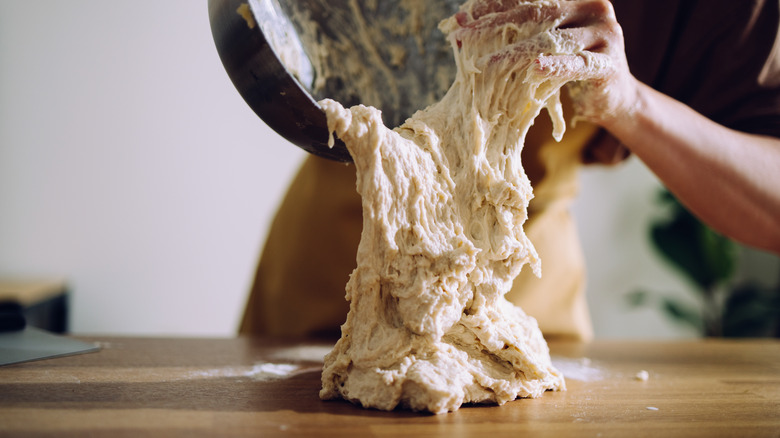What Does It Mean To Hydrate Your Sourdough (And How Do You Calculate It)?
Sourdough bread recipes can seem like a foreign language only intelligible to bakers. From terms like autolyse, pre-ferment, and proof to the various ways to measure the ingredients by weight, volume, or percentage, the process can be a bit overwhelming. But sourdough bread at its most simple is made of just flour, water, and salt, along with a starter, which itself is just more flour and water. These three ingredients make up every type of sourdough — crusty, artisan loaves as well as soft loaf breads, and the main difference is in the proportion of water to flour, which is known in baker's lingo as hydration.
Knowing the hydration percent of a recipe gives you a quick way to know how wet the mixed dough will be. Very hydrated doughs are about 80% water or higher, very dry doughs are in the 55% range, and moderate hydration lands between those numbers. You want to know how hydrated a dough is before you embark on making a loaf for several reasons. With high hydration doughs like ciabatta, for instance, very wet dough is messy. It's hard to shape and tends to stick to everything around it. The higher hydration creates a crunchier crust and takes longer to bake. So if you know the hydration of a recipe, you know a lot about the journey ahead from dough to finished bread. Now that you know what hydration means for a bread recipe, we'll talk you through how to calculate it.
Figuring out the hydration is just a bit of easy math
Hydration is always determined by the weight of your flour and water in grams, not the volume measurement. Simply divide the weight of water by the weight of the flour and convert to a percentage by multiplying by 100. If there's 750 grams of water and 1000 grams of flour, you've got a 75% hydration recipe. You'll rarely find a recipe that's been scaled to an even 1000 grams, but you can use simple division to check. For example in our sourdough bread recipe there's 578 grams of water and 850 grams of flour, or 68% hydration. You now know the dough will be relatively easy to handle and shape.
Hydration one example of percentages you need to understand to be a better baker — once you understand the math behind baking, you can adapt recipes along the way. If you try out a new recipe and feel the dough is just too wet to handle, for instance, rather than adding handfuls of flour by trial and error, take a minute to recalculate the hydration by weighing out the flour you add and you'll be able to recreate the recipe perfectly the next time.

